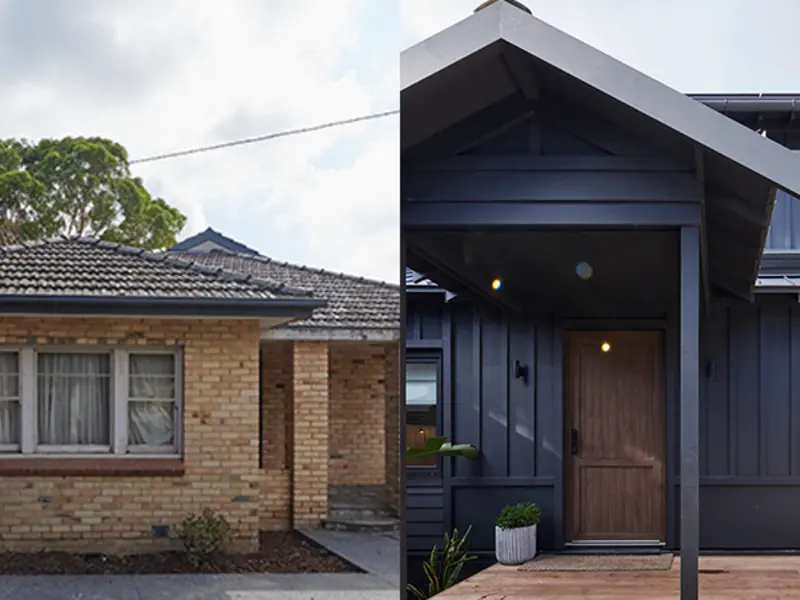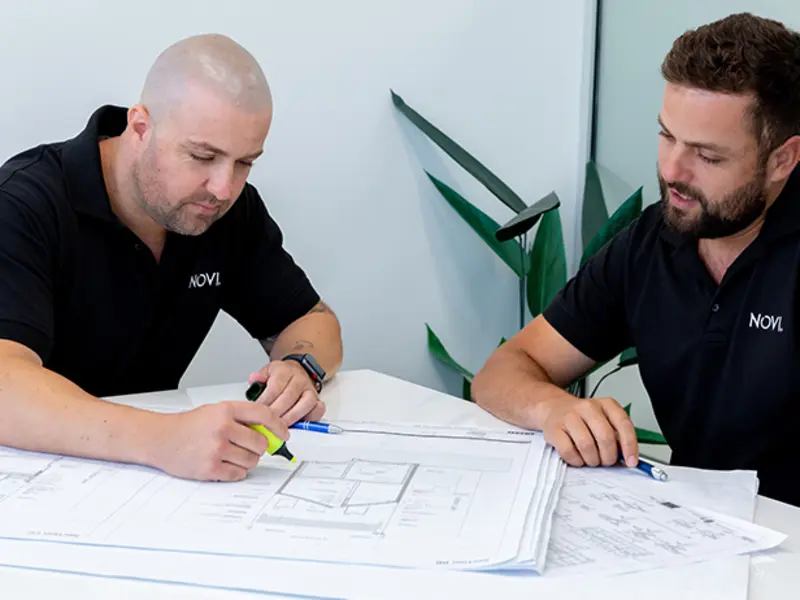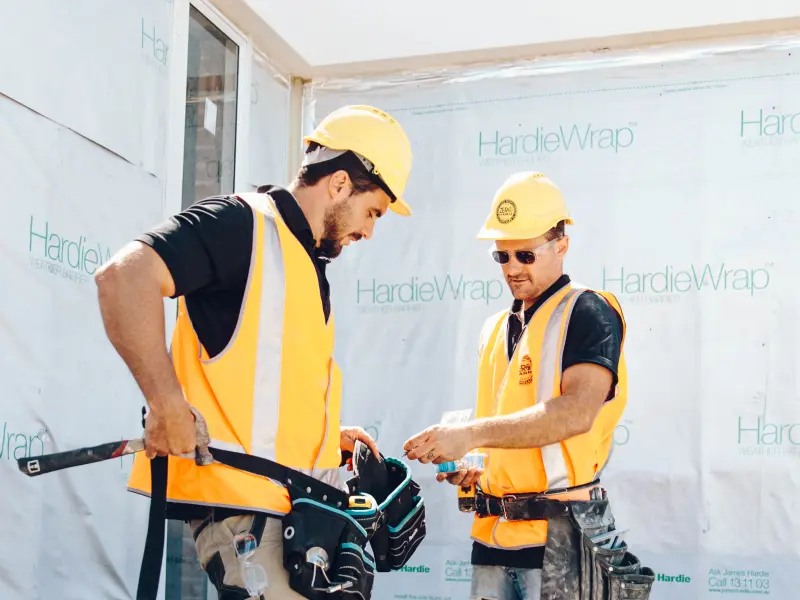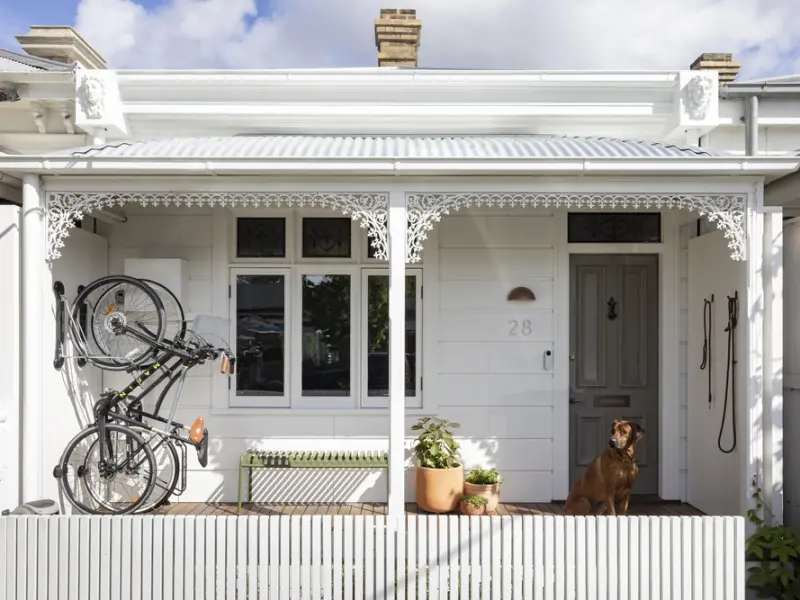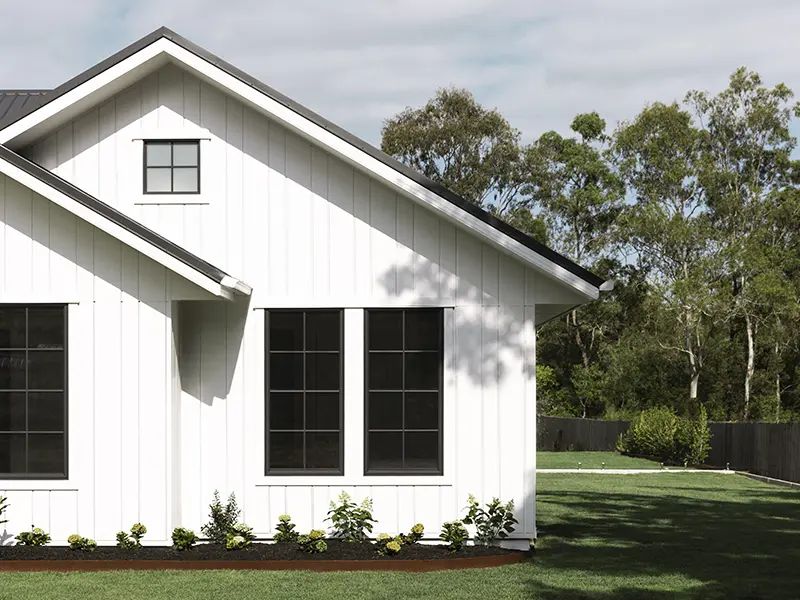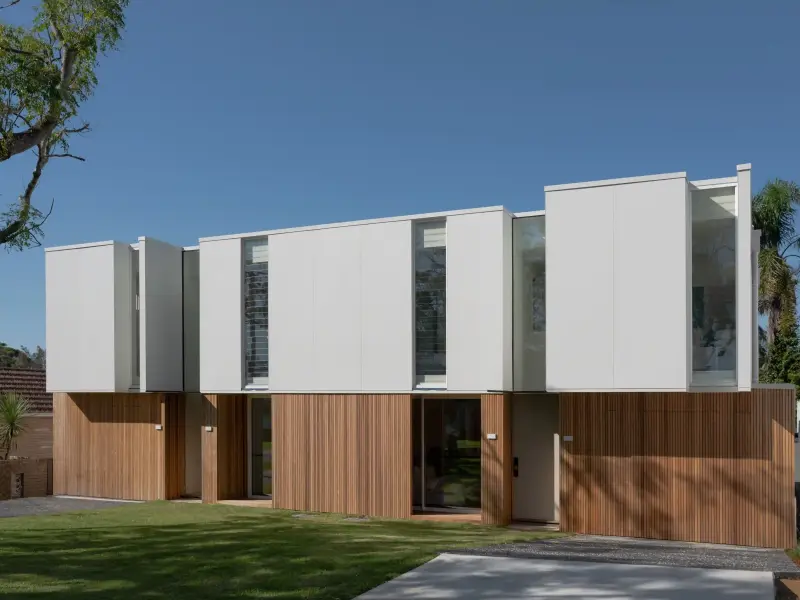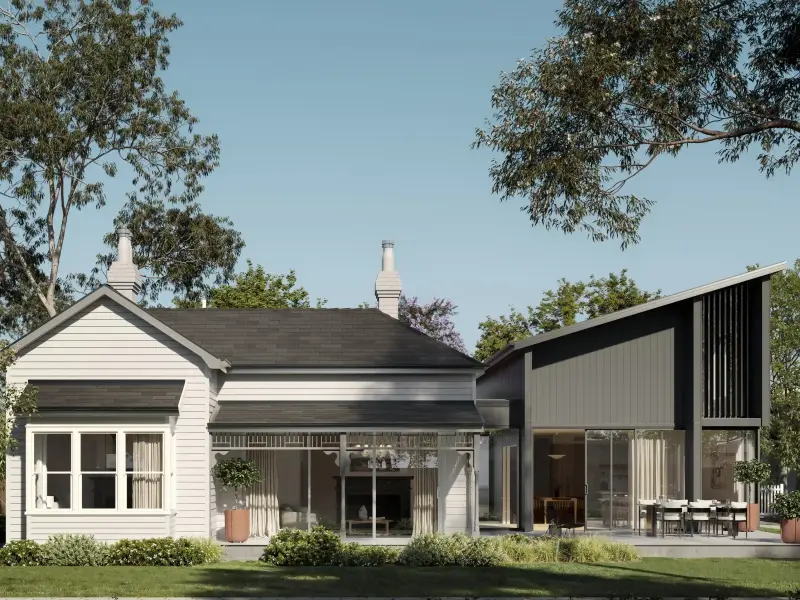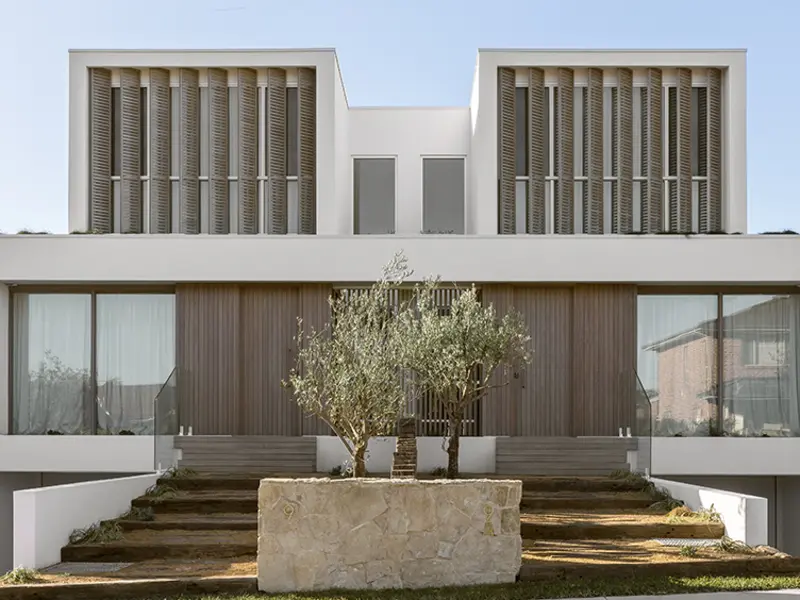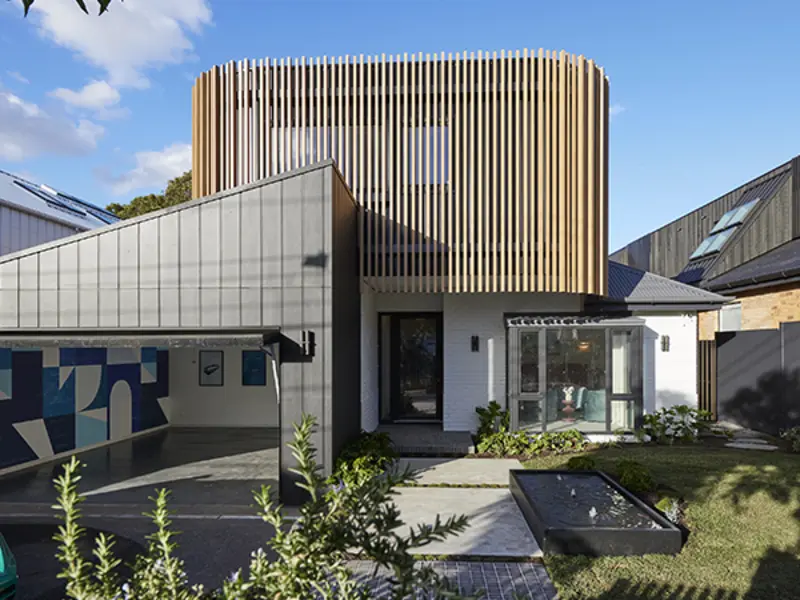
The importance of mixed cladding in Box Modern home design
Defining Box Modern design isn’t complex: at its core it is about an elegant arrangement of boxes. This removal of fussiness is key in minimalist design, but when the approach is this simple, materials become key – how to situate the home in the landscape, pull forward or exaggerate different elements? We chatted to Joe Snell to help us understand how materiality plays into Box Modern design and execution.
We’ll consider:
How mixed cladding can define or change a Box Modern facade
The opportunity for design diversity
How materials can simplify the building process
Mixed cladding and materials define the Box Modern exterior
One of the key features of Box Modern home designs is the focus on big, sharp geometric shapes highlighted by mixed cladding that heroes the style’s dominant shape.
Gilchrist Homes’ Gratwick project shows how using contrasting cladding can add interest and drama. To achieve this look they used both Hardie™ Fine Texture Cladding and Axon™ Cladding. They have selected a flat roof which is timeless and a hallmark of the Box Modern home design movement.

While choosing just one style of cladding is one option for the exterior, a more interesting execution is to choose mixed cladding.

Here’s a few reasons why:
1. Mixed cladding reduces visual bulk
Mixed cladding is a clever technique: according to experts, it breaks down the mass of a building into smaller parts, highlighting the form and giving relief to an otherwise ‘bulky’ structure.
“By bringing in different materials or cladding types, you suddenly start to break up the building so it becomes compartmentalised to the eye,” explains architect Joe Snell.
2. Mixed cladding adds relief and texture
By layering various materials, architects can manipulate scale, proportion and spatial perception, resulting in a rich and engaging architectural experience.
“From an architectural point of view, you can lead the viewer to have a different feeling about the building and not that it's just a massive one hit wonder,” says Snell.
The approach could be as simple as pairing a timber-look cladding with an interesting textured panel, by laying vertical lines against horizontal ones, or by introducing a different paint colour on the first floor versus the ground floor.
3. Mixed cladding is a classic architectural approach
Using mixed materials or mixed cladding is a popular technique in architecture. “If you think about it, it's just a part of your palette. With so many different colours, light and shade, you have an opportunity to play different games, to manipulate and to have the ability to achieve your goals, whatever they are,” says Snell.
Each type of cladding contributes its unique characteristics, reflecting the local context, climate, and enables homeowners to personalise their design.
Ultimately, this classic approach celebrates craftsmanship and the enduring beauty of architectural diversity.
Materials add design diversity
There’s a freedom in Box Modern house design that allows homeowners to mix complementary or contrasting textures to break up homogenous designs: an opportunity for the decisive to play and create something unexpected.
Box Modern homes incorporate minimalist principles and showcase technical details such as shape, roofline, and cladding. In combination with contrasting colours and bold mixed materials, the results are visually exciting and dynamic.
The opportunity offered by Box Modern home design featuring mixed cladding is one for creativity, adding design diversity to the streetscape by offering interesting facades that contrast to those around them.
Mixed cladding can add dynamism and purpose to the design. It’s all about clean straight lines — a bold but simple look with a balance of materials united by one colour.
Even narrow housing can benefit from the mixed cladding treatment.
“If you have a very narrow site and you have to build tall, introduce a horizontal cladding like Stria™ Cladding to settle the building into the landscape,” adds Joe Snell.
“If you've got plenty of width and you want to make your upper box look lighter, use a horizontal cladding on the bottom to create that long width at the base. On the hovering box at the top, use Axon™ Cladding with its vertical lines to create the sense of a lighter object.”

Mixed cladding making approvals simpler
While rules vary depending upon your local council and the design of your proposed Box Modern home, there can be advantages to integrating mixed cladding into this architectural style when it comes to streamlining the home building process.
From a town planning perspective, a bulky building is not attractive: they much prefer a degree of articulation. One way to do this is to have different materials working together on a façade, which can really enliven a streetscape with dissimilar designs.
Architect Joe Snell points to another advantage; “A gable roof when seen from the street is tall, and therefore it has more potential impact on neighbours. Box Modern is actually a shorter building overall.”
“Box modern presents less bulk in terms of height. And of course when a Planner looks at many of these submissions every day, they might consider that aspect favourably.”
A mixed cladding approach is worth considering to help streamline this often complex process, which begins by collecting product samples and colours and refining your dream Box Modern design.

Order your limited edition sample kit to test paint colours and curated cladding combinations to build your Box Modern home. Or for more inspiration, download the Box Modern Design Handbook.
